Greetings fellow frugal weirdos, Mr. Frugalwoods here! Welcome to Part 6 of our Frugal Homestead Series, which explores the finer points of how we’re going to reach our version of financial independence and move to a homestead in the woods in 2017 at age 33. Mrs. Frugalwoods and I plan to buy 20+ acres of wooded land, likely with an existing home and outbuildings, in rural southern Vermont. While this series isn’t your standard personal finance blog fodder, it’s a uniquely personal endeavor for us and, it’s essentially what makes us the Frugalwoods.
Part 5 of the series dug deep on the topic of water sources on rural properties. Today in Part 6, I’m continuing my examination of the structural differences between rural and urban properties and discussing the other end of the, ahem, water equation: septic systems! This is yet another factor that distinguishes a rural homestead search so dramatically from a standard city house hunt. While septic systems might sound like an unsavory topic, it’s certainly better to waste some time researching now than to end up in a waste-ful situation later.
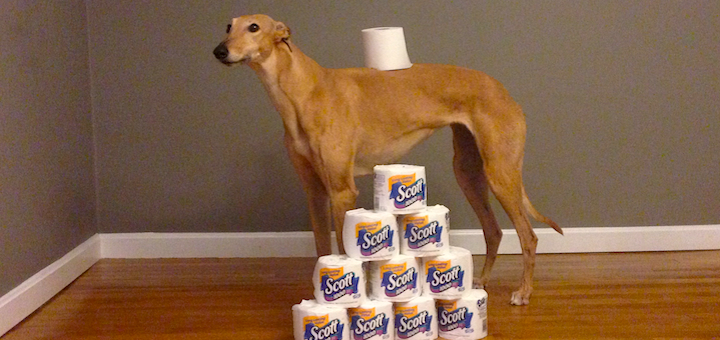
“House in amazing shape. Property offered as-is.”
“Land perked in ’94.”
“Approved mound design in hand.”
When Mrs. Frugalwoods and I first browsed rural real estate listings in Vermont, we quickly noticed some vocabulary and innuendo that we needed to decipher. Each of those quotes is from an actual listing, and they all come down to one thing: septic systems are both required and expensive. We’ve learned that the septic situation for a particular property can drastically affect its value, and even the legal ability for people to live there at all!
While the legal specifics vary from state to state, the basics are easy to understand. The government requires that you dispose of household liquid-born waste in an approved manner so as not to pollute the surrounding land. Makes sense, I certainly would want protection from my hypothetical neighbor flushing his toilet into the hypothetical stream that runs through my front yard.
But boy does it get more complicated than that! I figured I would put down on virtual paper the notes we’ve made as we’ve learned about wastewater disposal in a rural context. Hopefully it’ll help other aspiring homesteaders as they search for property.
Septic 101
The goal of any septic system is to take the wastewater from your house through a system of separators, filters, and helpful bacteria, allowing non-harmful water to flow back into the ground.
In practice, this involves several pieces of equipment:
- Septic Tank: collects the solids and the oils. This is what needs to be “pumped” regularly.
- Distribution Block: spreads the effluent (aka dirty water) across the multiple arms of the leach field.
- Leach Field: allows the water to seep into the ground over a wide area where any remaining sewage is consumed by bacteria.
Here’s my terrible drawing of what this looks like:
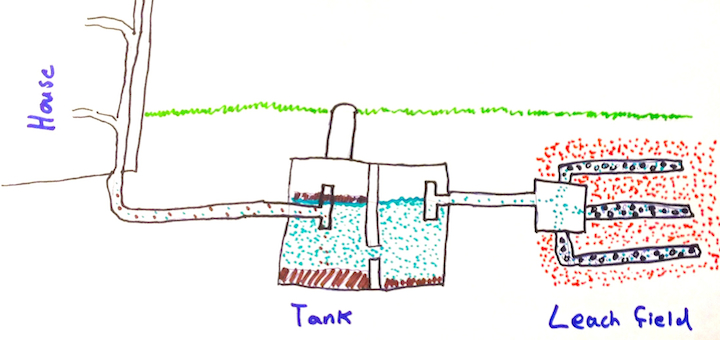
The wastewater (brown and blue) flows from the house down into the tank. The oils and fats float (brown), the solids sink (brown), and the water in the middle goes into the second chamber where a similar settling process takes place.
From the septic tank, the much cleaner water flows to the distribution box. Here it gets directed into one of several leach field pipes. These pipes have holes in them to allow water to seep out. They also have special, semi-permeable sand and soil around them to slowly let the water out. During this journey from leach field back to the environment, plenty of helpful bacteria (orange) break down the remaining waste.
Ideally this entire sequence happens using only gravity to move the wastewater. You can build systems that use a sewage-pump to move the water uphill into a system higher than the house… but then you can’t flush the toilets when the power is out. No bueno.
(Note: this amateurish drawing is way, way, way not to scale. Each arm of the leach field can be really long depending on the site and the soil.)
Here’s what an actual system’s engineering drawing looks like (from a property we considered):

This was a system built on shallow existing soil which required building a “mound” to accept the wastewater. A mound is a more expensive option since the soils for the mound have to be certified and trucked in.
There are three factors that determine the viability of a site for septic use:
- Size: Is there enough square footage on level ground to put a system with an adequately sized leach field? The entire cumulative distance of a leach field pipe can be hundreds of feet. Modern systems in many states also require enough space for a replacement leach field should the primary one fail.
- Soil Permeability: If the property has bedrock or clay at a shallow level, there’s no surrounding ground for the wastewater to filter into. In that instance, you’d have a leach pond, not a leach field. Yuck. The test to discover how permeable the soils are is called a “percolation test” or more commonly a “perk test.” If you’re purchasing bare land, it’s common to have the sale contingent on a successful perk.
- Location Relative To Existing Wells: The government doesn’t want you to put a leach field uphill of your neighbor’s water well. Makes sense for all involved.
As the years have gone by, the regulations covering septic systems have become stricter. What was code 20 years ago isn’t necessarily code today.
Consequently, modern septic systems are extremely expensive to install. Like $20,000 to $40,000 expensive. And most jurisdictions will not allow you to DIY, even if you’re working from a plan drawn up by a professional.
All that to say, one of the reasons Mrs. Frugalwoods and I are primarily interested in purchasing an existing house rather than building one is the cost of a modern septic system. Between your well and your septic, you can drop $50,000 before even starting to build a structure. Not very frugal.
How Do Septic Systems Fail?
The weak part of the septic system is the leach field. If water can’t exit the leach pipes, the entire system stops working. Eek! There are a myriad of ways a leach field can fail, including:
- Solids from the system clogging the holes in the leach field pipes.
- Tree roots growing into the leach field and infiltrating the pipes.
- Someone driving a heavy vehicle over the field and collapsing the pipes.
- Large amounts of water from the house overwhelming the permeability rate of the leach field.
All of these (save the last one) are supremely bad news. Once a leach field has been clogged, there’s no good way of fixing it save for digging it up and replacing it ($$$$).

How We Assess Septic Systems
If the toilets flush and the sinks drain the system must be fine… right?
Not necessarily.
When Mrs. Frugalwoods and I look at properties, the seller will always say “Oh yeah, never had any problem with the septic.” And, sometimes, that’s the truth :-). But as savvy buyers, we do have a few tricks for sniffing (ha!) out a system in bad shape:
- How often is it pumped? You want to hear “on a regular schedule, here are the receipts.” You don’t want to hear “aww, it’s a great system. Never needs pumping!” False!
- Systems need regular pumping. If the solids or fats in the tank build up and overflow into the leach field, the field will eventually clog. Every system needs pumping.
- What does the area around the leach field look like?
- If the ground is damp, that’s a sure sign something is wrong. Properly functioning leach fields aren’t noticeably damp on the surface.
- If there are trees close to the edge, roots could be a problem. Or in the case of one place we looked at with an ornamental tree planted right in the middle of the leach field… that will most certainly be a problem.
- How big is the tank, and how many people are living in the house?
- Tanks and leach fields are sized for a certain number of bedrooms, which is usually a good corollary to how much water will be exiting the house. But if 10 people are living in a 3 bedroom house… the system might be experiencing more water than it should.
- Is there a garbage disposal on the kitchen sink?
- We love our garbage disposal here in the city, but they’re murder on rural septic systems. Why? Because they pulverize food into tiny particles that can be suspended in solution in the septic tank and don’t settle to the bottom. These particles then flow into the leach pipes, clogging their outlet holes. If a house has a garbage disposal and a septic system, it’s a giant red flag.
- Giant jacuzzi tub in the master bathroom:
- Most places we’re interested in aren’t this nice, but a huge tub can be a warning sign. That much water flushing into the septic tank all at once can agitate solids and force them into the leach field.
- Septic additives in the basement:
- Yes, I’ll admit to it now: I’m a snooper when it comes to touring houses. And if the homeowners feel the need to pour “save your septic” additives into their system… I want to know about it.
-
Definitely want to snoop around their toilet paper. Type of toilet paper used by the homeowners:
- Yep, I look at their toilet paper too (told you I’m a snoop!). Triple-ply ultra-quilted butt pillows may make you feel luxurious, but they probably don’t break down well in the septic. If the system is pumped regularly then it’s not necessarily a problem, but no-pumps plus triple-ply is a danger sign. I like to see Scott’s single-ply septic safe on the roll. Yet another reason to buy the cheapest rolls that Costco sells!
- Does the system layout match what was permitted to be built?
- At least in Vermont, you have to file a publicly viewable permit to install a septic system. For houses we’re looking at, I consult the map contained on the permit and compare it to the actual site conditions. If the system wasn’t built as permitted, this could be a cause for alarm and you’ll want to investigate.
- Ruts or other signs of a heavy vehicle near the septic tank:
- Maybe it was just time for the regularly scheduled tank pump-out. Or maybe the owner has been having problems and had the tank pumped right before it was put on the market so that the plumbing would work. A question worth asking.
As you read this list, you can also consider it an itemization of “how to keep your septic system happy.” Part of our planned frugality on the homestead is taking care of the things we own and properly maintaining systems for the long term. It’s not frugal to delay a septic pumping because it’s expensive. It’s the very definition of penny-wise but pound-foolish.
And on that note, I conclude Part 6 of the Frugal Homestead Series. Next up in the series we’ll discuss the intricacies of visiting potential homestead properties. Want to make sure you’re among the first to receive Part 7 delivered hot and fresh to your email machine? Sign-up in the Frugal Hound email box below and she’ll send you a message.



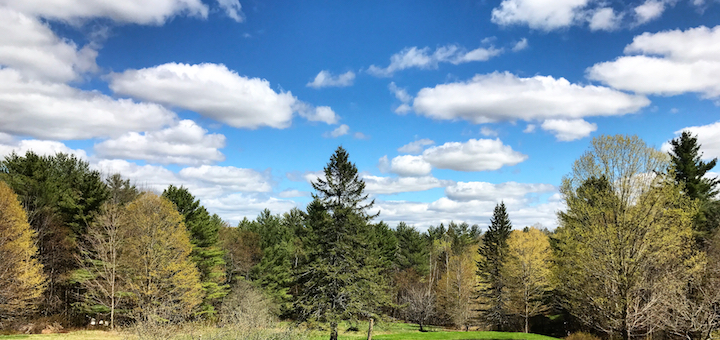


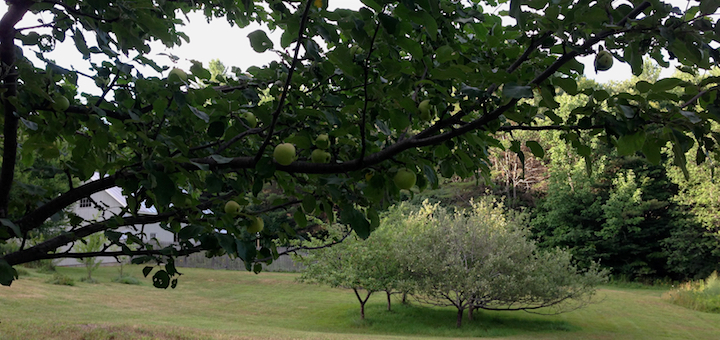
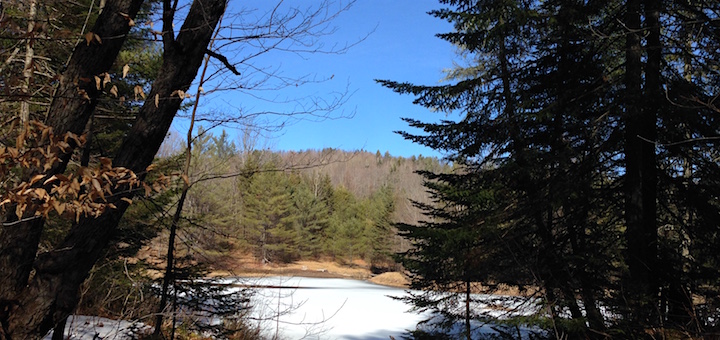
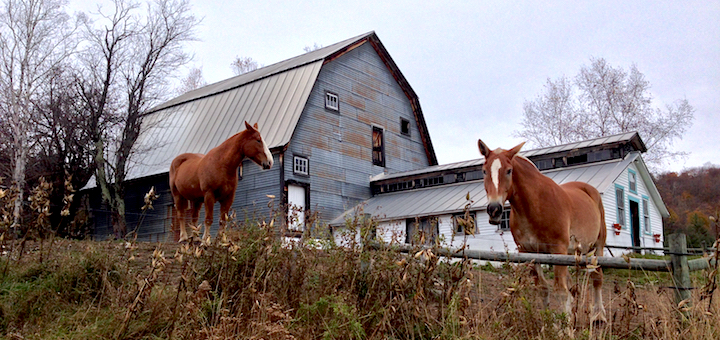
Wow mr. FW…… Who knew there was so much to consider just about the simple septic system! I’m glad you pointed that out as we have a septic system and Leitchfield at our own house ….. And of course we have a jacuzzi tub in the master bath that we just used this weekend with the kids! You’ve officially inspired me to only buy single ply toilet paper and dig up our receipt to find out when the last time our septic tank was pumped . It sounds unbelievably expensive if your Leachfield gets a clog ……
Hah. Well don’t panic, these things take time to accumulate. But it’s always good to reasses habits 🙂
Hi Frugalwoods, did you really draw those pictures? No wonder, you have a natural talent. Haha! By the way, I think I gotta have my septic system checked one of these days coz I think it needs now attention. 😀
Genuine limited edition artwork.
Thanks for starting my Monday off with such a crappy topic! 😉
Wouldn’t want anyone to ‘waste’ money buying a property with a bad septic!
It’s amazing .what you learn about when you’re frugal and DIYing. I think of it as inflating your usefulness instead of your lifestyle.
I like that! I’m a sucker for learning random facts, so the homesteading project really feeds my need for research.
Amazing homework you are doing. I said it once I’ll say it again, you should put a buyers guide e-book together. 🙂 We have a cesspool in our home, and agreed it’s never fun to have a problem with it. We had to upgrade our system a few years back, basically increasing the size of the tank you have pictured in you septic drawing.
Thanks! Maybe someday there will be an ebook, who knows. Probably after part 35 is published in 2018 😉
I’m totally geeking out over this post. Thank you for explaining it in such detail!
I’m a lifelong Scott’s tp user. In fact, softer tp like Charmin feels weird to me, plus I know Scott’s is safest, even sans septic system.
Thanks! I’m glad to see someone else who finds it fascinating despite it’s unsavory topic! As frugal hound attests, we’re a Scotts family even in the city with a normal sewer system.
We live in a rural area on about 2 acres (20 acres would be a dream). The guy who pumps our septic tank every five years taught us a frugal trick: pour a teaspoon of regular yeast into the toilet every month (5-cent cost). He says this is basically the same stuff “septic save” you buy at the store for $8. The yeast just gets in there and helps break everything down. Keeps the bacteria working overtime.
Good advice all around. No heavy paper, chemicals, go down our drain. We also don’t flush the toilet after every use. If it’s yellow let it mellow. If Its brown, flush it down.
Huh, interesting. Will have to look into that! I buy yeast by the 2lb bag for baking, so it’s certainly something I have on hand.
We have a raised mound system and have it pumped on a 3 yr schedule .The trick we use was shared to use by the contractor that built the system. Fill a garbage can with water and let it get warm in the summer.Then put 2lbs of brown sugar in it and stir it up good. Pitch in a packet of yeast to consume the sugar and multiply into billions of active cells.Also include one can of beer for some reason he said this is the secret ingredient! Keep it uncovered for another day and stir every few hours. Next day or two pour this into the main tank and the pump or secondary tank which is what our sewage pump pushes the cleaner water to the pipes. This provides bacteria to both sections of the system. We notice about a week later lots of air going into the inspection pipe when we leave it open and then also air/carbon dioxide coming out as the bacteria produced by addition of the yeast dissolves most of the organic stuff in the tanks. The pump company is amazed how well the system has held up now 34 yrs later!
You would be amazed at how many people who say, “I just want to live off the land, on some property somewhere”…yadda yadda. But it takes more than just a desire. You are both smart cookies who know what it’s going to take. Your costs of a new septic seem accurate. Just one thing to consider…putting in new yourself, you know what you have and know that it works. Buying something already installed works too, homes with septics are sold everyday. You just have to do your homework, which you are doing. People will tell you what you want to hear, so just keep on doing what you’re doing and don’t let anyone tell you differently. You need to understand everything about your new life. Knowledge is power, as you both already know!
Thanks Bev! It’s funny, I feel like folks who say “I’d love a home in the woods” should be handed a book entitled “So you want to buy a rural property huh? Here’s the 100 things you have no idea about but need to learn” 😉
We certainly didn’t know how much we didn’t know when we got started… but time and a bunch of library books seems to be helping!
Sounds like a book you may be qualified to write. And I may be interested in buying.
(or borrowing from the library)
All I can say is good luck! My in laws just up the street from us live in “the county” which just means they aren’t on city water and sewer. They have recurring issues with their septic tank and field and don’t have the $$$ to fix the problem correctly. It’s a pain for sure. My other set of inlaws have had a rough time with their septic too (though they got rid of that house anyway).
I’m just happy to pay my $100/month to the city that covers water, sewer, trash, recycling and stormwater. I like seeing the big sewer sucker trucks pull up, efficiently suck out the sanitary sewer lines (or whatever it is that they do), then rumble away 30 minutes or an hour later. I flush, it goes down the drain and voila we’re all happy. 🙂
It’s so smart to be thinking about these things though. I see too many folks diving into a romantic notion of rural living by buying a nice piece of land with maybe a stream or a nice view. Then they realize they’re sitting on bedrock, shallow soil, soil won’t perk, or it’s so low lying (near that gurgling stream!) that you can’t build a leach field. At least you know what you’re getting into!
Yeah, people gripe about city government… but efficient and reliable water and sewer at such a cheap price is a heck of a deal.
We’ve certainly looked at some places that had old septics in odd spots. My favorite was the leach field right next to a pond the owner dug for trout fishing. I mean come on…
I dealt with enough operations and maintenance forecasts for government infrastructure projects to know that it’s not just the up front cost, but you have to periodically maintain and fix things when they break. Septic fields and wells are not immune to those requirements unfortunately.
As for those trout. Mmmmmm… yum. Hope it was catch and release and not something he relied on as a food source for human consumption.
We had a septic system that failed because it wasn’t installed properly when we built out house.. We replaced it with an aeration system which supposedly makes the waste water clean enough to drink. Although I never tested that claim, the water did come out of the final drain pipe pretty clean looking. We used Scott tissue as well, plus we used Rid-X monthly and had it pumped every other year. One time the company who pumped our system told us we had the cleanest take he’d seen.
Well maintained system high five! I think the “honey wagon” guys are used to servicing systems that are treated (abused) like city sewer. Apparently a septic is very durable if properly maintained!
It’s a bummer you had to do a replacement, but at least now you know it’s been taken care of properly from the very beginning!
It’s not a glamorous topic, but it’s an important one! I grew up with a septic system, and our current house has one. We get our tank pumped every three years. (Only three people live in our house.) It always feels like a bummer to write that check, but not as much of a bummer as it would be if the system backed up or failed!
Yeah, it does seem like the sort of routine maintenance task that some folks would let slide a little longer than they should to put off the bill. We’ve seen systems that have gone 7 years between pumpings… which is sorta terrifying!
We have a septic system and recently had to deal with a separate issue. Our tank had settled to where the outflow was higher than the inflow and we had to pay to have it re-leveled. That was not fun. Keep that in mind as well!
Also, we throw what amounts to a regular size packet of yeast in once a month via the toilet to keep all the happy bacteria…happy. Our pumping company says we are one of the easiest customers they have to deal with because we do take care of the system. So we will continue to add our yeast.
Huh, that’s a problem I hadn’t read about before! Adding it to the list! I assume they had to dig up the entire tank and build up the dirt underneath?
Actually they just moved the outflow line and so far so good…but we continue to monitor the situation and do repair to our poor lawn. :-/
Check out Prince Charles’ “sewage garden” at Highgrove Castle. It is an environmentally amazing endeavor.
Just did a google search… how neat! Lot of engineering and ingenuity went into that!
We’ve been on septic for three years now, and it’s been no big deal. You just have to maintain it and have it pumped regularly. (And we still sometimes flush down those septic tablets anyway, just to be sure, even though we have never had problems!)
The worst thing that has happened is when someone came to pump our system last time and some of the… septic goo got on his face. True story! What we learned from that is– dont work as a septic pumper if you can avoid it.
Ewwww! See, this is part of the reason I want a well-maintained system… DIY would be absolutely no fun! And I think the honey wagon operators earn their money the hard way! Though I suppose it’s the sort of thing that is somewhat recession proof. People have to be able to flush!
We had septic for a few years and never had to give it a thought–it was pumped when we moved in. My parents have one of those uphill-water-pumps and have never complained; I didn’t know they couldn’t flush when the power was out! But we never had water when our power was out anyway because the well pump was electric, so we could get a little bit from the tank n the garage and then no more.
Actually, we had much more trouble with our well. In South Georgia, where we then lived, I guess people figure it doesn’t get that cold, so the wells don’t need to be protected from freezing. Ours was liable to freeze any time the temperature got below about 25 unless we left a faucet dripping.
You must have been in the mountains, or at least the foothills, to be seeing that temperature regularly in Georgia! In the southern VT region it’s common for the water lines to be at least 50″ below ground, and considered good insurance to go all the way to 60″ if you are building new. Frost lines go deep!
I live in a very weird bubble of “city” immediately adjacent to “rural district” which means my neighbour has a brand new septic system, but I’m on city water and sewer. It cost him $50,000 to install the septic two years ago. The new septic systems are pretty slick, though, and take a lot of guesswork/engineering out of the requirements.
Wow, yeah, that a fancy flusher! The engineering that goes into a modern system is really cool. It’s amazing how many sites that used to be completely unsuitable for septic can now have one installed… albeit for a serious price!
We live in a small town and have a septic system and city water. During the inspection of purchasing we discovered a very non-compliant system and negotiated the sellers install a new system prior to close. We helped oversee the whole process and choose the company to do the install. The company’s tag line was “we are #1 in the #2 business.” I also avoid anti-bacterial cleaning products and soaps.
Oh, good point on the anti-bacterial cleaning products. Bleach too I’ve been told is a big no-no for washing clothes. Makes sense, we want those bacteria to be happy, healthy, and active!
Ah, the joys of rural living. Perhaps you could look into a composting toilet/outhouse? (a HUGE amount of fun in the winter, im guessing).
Also, perhaps you should let mrs FW make the drawings from now on…….
Hah! Well, the state of Vermont does not look kindly on alternative wastewater disposal methods. And I understand their point… it’s easy to mess it up and end up polluting your neighbor’s place. Plus, I don’t think I’m very keen on using an outhouse all winter!
Composting toilets are interesting, but the law still requires a septic system to be in place for grey water… so you aren’t saving much.
Actually, composting toilets are a VERY viable solution to the septic system problem, and just to straighten out any misunderstanding about them, they are installed inside your home , do not smell (in fact, the newer waterless composting toilets such as are manufactured by compostingtoiletsusa.com probably are LESS smelly than conventional toilets, if correctly installed), are easy to install, and can accommodate several people. These toilets totally circumvent the whole issue of conventional septic systems, and are used throughout Europe. They have recently been installed in several public locations in VT, and are used in some public facilities in large cities such as NY. Outhouses ARE a pain in the butt (LOL) in winter, and I speak from experience (my grandparents had one as long as they were alive, and we got to use it whenever we visited–a 2 holer!). But composting toilets are a different beast, and deserve more discussion. They obviously got a bad rap in the 80’s and 90’s, but everything changes, even composting toilets. Please do some research on these, and maybe some of the newer regulations and guidelines for using them in VT as well. Thanks!
Wow, I’ve never been happier to have sewers! Just flush and awaaay it goes! So efficient, so modern, and only about $35 a month, half of which is technically for water usage. Plus, I can use whatever toilet paper I want! Chalk sewage up under “Things I Don’t Want To Have To Think About.”
On a more serious note, my grandmother has been wanting to sell her cottage on Cape Cod for years, and the one thing holding it up was the septic. In Mass., it needs to be upgraded to code before you can even sell the house. The big problem was that the septic is shared with another cottage, owned by people who didn’t want to split the cost. I think this is still holding up a sale.
Oh man, that sounds like a tough situation. I can imagine the legal peculiarities around something like that must be “interesting” to say the least! Hard to imagine that people thought it was a good idea to share something that takes ongoing cash infusions to maintain and eventually replace. Maybe both places were owned by the same person at some point?
It’s part a little complex of little cottages, each 600 sq. feet and under, but individually owned. Probably the original builder was looking to save money.
OMG, laughing here despite the crappy subject. Tattling on myself…. when I was about 10 the parental unit made fried chicken. It was my job to do dinner dishes and I’d had instructions to leave the kettle alone. Missy not so helpful with poor listening skills proceeded to dump 3# of melted crisco down the drain! My excuse, but Ma it looked like water, didn’t go over very well! Long story short, 2 days later a new septic tank & leach lines were installed. Tough lesson but I did learn, no matter where I’ve lived, whether with septic or public sewer, nothing goes down sink drains except soapy water.
One more thing, a co-worker had to have their leach field replaced. It seems Skin So Soft is great for clogging up leach lines. Imagine there are lot’s of personal care products that would do the same. Anti bacterial anything on a septic also seems like not so a good idea.
Oh wow, what a story! I’ll have to add that to the list “No Crisco!”. Come to think of it, I bet that would take out a city sewer line as well. Lesson learned, I suppose.
I too have some strict rules even in the city for what goes down the drain. I was amazed when I started working at an office with a sink and a disposal in the kitchen and saw what my co-workers dumped in the sink. Half a sandwich, banana peel, apple cores… I mean come on people!
I saw an article that said the little plastic beads in homecare products were being swallowed by fish as the waste was pumped to the ocean. So microbeads are even being banned in some states. I’d hate to see what they would do to a septic system.
Found the artice: http://time.com/2917462/why-illinois-banned-microbeads/
You guys are definitely doing your research! I’ve lived in the country most of my life, and have had a gravity septic system for about 10 years. Just keep in mind that you will need to have water on hand to flush toilets during a power outage, as your well pump will most likely run on electricity.
I would also stay FAR FAR away from ANY house (in the city or country) that flushes those “flushable” wipes. They are very bad for plumbing and septic systems.
We have our septic pumped every two years. The company that does it says it’s best not to put any kind of additives in your septic other than the normal stuff that should be in there. So far, our septic has a clean bill of health.
I would also recommend making sure the leachfield isn’t in an area that gets much foot traffic. You should stay away from your septic field during the winter months or you can cause pipes to freeze.
Keep on doing your homework!
Thanks Christina! Those “flushable” wipes are a scourge (or job security) for plumber everywhere! I totally forgot to mention them above, but I should. I can’t imagine the havoc those would wreak in a septic system.
re: pipes freezing, is that just if you compact the insulating snow blanket on top of the leach field? I can see where you might not want to make that your sledding area!
Yes. The snow acts as an insulator. If you walk around on top of your septic area, it can push the frost down and cause damage.
My grandparents were on a septic and I remember it being a bit different. Definitely one of the quirks of homesteading, or just being a little further out from the city.
Like with everything, there are tradeoffs.
Yeah, the hassle comes with the territory, so to speak!
Our house had a septic tank before the neighborhood was converted to sewer in the 90s. Eventually we want to get the tank inspected and if it’s in good enough shape convert it to a cistern to give us some more flexibility in using water on our landscaping since those are starting to be approved by local building departments. Water for a small garden starts to get pretty costly here and a cistern that big would go a long way to storing the rainy season water to use in the dry season.
But our rental is still on it’s septic system and we considered many of the same items you did even though it’s not a rural property. We don’t allow over-capacity rentals and make sure to get it pumped periodically.
The good news, cost-wise, is that if you have the tank and system in place, but the leach field is malfunctioning, it’s totally possible to DIY a repair to a leach field. A friend of ours (who lives in the same neighborhood as our rental with a septic) was completely disgusted by the $8K (maybe $10K?) estimate to dig a new leachfield after tree roots did major damage to his. Instead, he paid to have the tank pumped a couple of extra times, and then dug a new leach field himself after getting the problem trees removed. It took months of digging a little every day, but he did it in lieu of his upper body workouts and ended up saving a boat-load of money (~90% of the estimate) since the actual pipes down there are ridiculously cheap compared to the job quotes. Not to mention doing it by hand with a shovel, he also prevented more of his landscaping getting ruined by big earth-moving machines that would have needed to make their way into his backyard.
I like it! I always am joking to Mrs. FW that I’ll be on the “wood cutting, ditch digging, cabin building” workout plan on the homestead which will hopefully make up for less regular biking to and from work. I suppose digging a leach field woudl fit well into that workout regime!
Although I might have considered renting a backhoe 🙂
Alas, the backhoe rental probably wouldn’t have worked for our friend – he’s legally blind (he can see, just not well). So in addition to not being able to get a drivers license, he isn’t usually certified to operate heavy machinery. =P
Learned something new today, thanks for the comprehensive overview! Not sure whether we will ever have a septic system (it’s pretty much non-existent in the Netherlands), but you never know.
But if you ever encounter one, you’ll be ready!
I tell you what, after reading this post, I have never been more thankful that I haven’t had to put this much thought into a septic system. It really makes you appreciate the “ease” of what you have now. And I love both of your drawings for this post!
Thanks, you can tell our liberal arts education is really paying off! 😉
I love the drawing, makes it easy for us visual learners. Y’all certainly are doing your research, and it makes for some great posts!
Thanks! It’s fun to figure all this stuff out. I’m a sucker for learning random knowledge, so this whole homestead project really humors my tendencies!
You may be interested in a lower cost, and more environementally friendly approach: composting your waste. I recommend “the humanure handbook”. It is a little preachy, and has a large rant/content quotient, but the content it does have is solid.
Basic idea is: poop/pee in a bucket. Cover with sawdust. Repeat until bucket it full. Dump on compost pile, cover with straw. Repeat for a year, start new pile. Wait a year. Distribute year old pile to the earth. This is safe, uses no water, increases the fertility of your land, and the cost is minimal (load of straw and sawdust once a year, and intial cost of buckets.)
Yes. +1. I am going to start doing this soon even though we live in the city. The extra compost will do the garden good (after the extra-long ageing). Even in a city with the “conveniences” of sewer, shitting in your water supply is so dumb (even with a treatment plant in between).
1. Humanure toilet
2. Grey water plumbing which drains to an artificial wetland/pond for direct bio filtration. Bam.
How would you handle grey water in the winter? That seems to be the sticking point in northern climates (for humanure too). While the heat of the compost pile will keep the center unfrozen, the top will be hard as a rock for 3+ months a year here. While I guess you could dump waste material on top all winter and have it thaw all at once in the spring… not sure if that would work well.
And call me a bad hippy (bad hippy, put down the 5 gallon bucket!) but I do like the convenience of flush plumbing. And I like my parents coming to visit 🙂
Haven’t read the book in a while. I’m not set up for grey water here, and wouldn’t have the space even if I wanted to.
But the compost doesn’t matter at all. I add stuff to my compost all winter – it just holds there until spring. If you want to keep the compost a bit warmer, put straw bales on the sides of the pile. – this also works in the warm season to keep it from drying out at the edges.
The grey water was more idle comment – but without solid waste going into the septic system, a lot of the complications simply vanish. Hard to clog when it’s just liquid and some biodegradable soaps.
I (and the Mrs) really should try and rent a place with a modern composting toilet and see how it works in practice. I do really want people to feel comfortable visiting us in our future home, and I feel like technology has to make the best of both worlds possible. I just have a hard time figuring how a system with no water is going to keep smells and mess down.
Humanure toilet =/= “composting” toilet. It’s really well worth reading the book “Humanure Handbook”. It’s a quick read and I found it pretty convincing, though I have not yet embarked on it.
Built a big enough secure composting area (city requires it be rodent-proof, so it’s a 4′ cube covered on all sides with 1/4″ hardware cloth) to do it and plan to grab the remainder of the supplies I need (extra 5 gallon buckets, some peat moss, and a toilet seat to install on the scrounged frame I’ll build). The wife is totally opposed, but we’ve reached a detente that I can put it in the basement and use it. Maybe I’ll work on the kids to use it too. Animal manure is fantastic for composting but here in the city humanure is the one manure I have guaranteed access to.
A composting toilet, on the other hand, is A) more expensive; B) typically breaks down anaerobically (stink) while in the holding tank, so usually they really on 12v fans for venting, maintaining a negative air pressure from the toilet “tank” – that’s how they avoid the stink. For me the deal breaker is the expense. I can’t possible spend $1K-$5K on one right now, not to mention the other disadvantages –> more are cited in the book.
All depends on comfort level, of course, but I think the ideal would be humanure toilet for personal use; then maybe a modern composting toilet sized for 2 people for guests? (The 2 person units are cheapest, about $1-2K.
But read the book. I read it more out of curiosity than anything, but became convinced it was something I wanted to try.
Yeah, I’ve heard of this! Unfortunately the law in Vermont (and most states) is pretty clear about requiring all homes to have a working, permitted, septic system. Even in hippy Vermont humanure is still technically illegal.
Interesting. Looked into it a bit, and I found this:
http://www.waitsfieldvt.us/docs/Assessment_of_Wastewater_Options_Waitsfield_SEI_Report_AppendixD.pdf
which includes the text:
Composting toilets are now specifically allowed in the EPRs, and there is no longer a
requirement that a project have enough area to build a septic system even though a
composting toilet is proposed. The new rules also allow a smaller leachfield to be used for
graywater only when a composting toilet is proposed.
You would probably need to buy a commerical composting toiler system rather than using the humanure set up. This would still probably save you money long term. (no real need to pump out your smaller septic system, less water usage, etc.)
I am lucky to have purchased land in an area with no building permits or inspections, and very understanding health inspectors.
The area of Vermont we’re looking at has no building permits or inspectors EXCEPT for wastewater. They tend to take the position of “we don’t care if your house falls down, but we’d prefer you didn’t pollute the stream”. Which, I think I can grok.
Yeah, it’s that greywater leachfield that’s the sticker. Most projects I’ve looked at calculate the cost of doing a permitted greywater leach field at 80% of the cost of a full septic. At that point, considering how much more finicky composting toilets are… I can’t make a good financial argument for composting.
But the ecological argument is compelling. The “parents” argument is also compelling. We want people to feel comfortable in our future home. I really should try and find a place to rent for a weekend with a modern, fancy, composting system in place. I don’t have any direct experience with them.
We had septic systems at the duplex we owned. It was on a mound system. One of the renters seemed to have a lot of troubles flushing his toilet and it was a huge headache. We spent a lot of money on that system. Ugh! I don’t necessarily enjoy the sewer bill where we are now but I would take sewer over septic any day!
Yeah, at least with the sewer your liability is capped. Once the waste reaches the main line, it’s no worry of yours! I’ve heard that mound systems can be more finicky than a traditional one, sounds like your’s was a headache!
Great information on septic systems!
Here’s something else to look at: Do the present owners have teenage daughters??? Ask if they’ve flushed TAMPONS down the plumbing!!! (3 teenage girls in my house, about 15 years ago, & came home to raw sewage w/ tampons, backed up in the garage & toilets–UGH! Nasty mess! Thank GOD for Rotor Rooter! There are STILL signs in my 2 bathrooms: “No tampons R 2 B flushed!” I live in rural OH, & have a septic system (& I honestly don’t know if I have a leech bed…the former owner (over 22 years ago) sd that there were holes in the bottom of the septic tank, that allowed it to drain…but historically, I need it pumped about every 2-2½ years. I DO use the Scot tissue; I DO have a garbage disposal, but seldom use it because I have a compost pile along the back of my property line. I DO have a washer & dryer (but use a clothes line when weather permits) more stuff to consider! THANKS for a great newsletter!
Thanks Barb! It’s funny how so many people don’t think of the system on the other side of the flush. Turns out it’s more delicate than most would imagine!
Wow, you’ve hit on a hot topic!
We were at the point on our city sewer lateral where the plumber was starting to wonder if the lateral had shifted… We kept having backups. Problem turned out to be one kid who was not very efficient with the premium Cottonelle. Switched to AngelSoft or Charmin Basic and no further problems.
Yeah, even in the city the “premium” paper can be hell on the pipes. It’s cheap insurance to use a “septic safe” paper even in the city.
I love Trader Joe’s recycled TP, which is decently soft but also fairly thin and easy on the plumbing.
I don’t know anything about septic systems, but I do think you’re really smart to research all of this ahead of time! You don’t want to get stuck with a problem septic or well!
Yeah, it’s something we’re keen to avoid. No system will be perfect, but we want to at least understand the pitfalls of whatever one we end up with.
Haha, I’m so glad you posted your drawing of the septic system first! I’m glad to hear that you guys are seriously vetting the properties and not taking the “we’ll just make it work” approach. I mean, you could make it work, but it’s much better to do your homework and buy something that is in good condition. Really enjoying this series on the homestead plan.
Thanks! It’s been fun to really “dig” into the specifics and learn all these new areas of expertise. Part of the allure of homesteading for us!
Really enjoying this series! This episode is another great resource! Although it’s making me think urban living might be better for me 🙂
Also, I love this note from the engineering diagram (in the lower-left): “Existing shallow well to remain, not to be used as a potable water supply.” Hopefully the new owners read that one…
We actually walked that property and did find that old well. Definitely an 1800’s hand dug affair, with a modern concrete cap. Thankfully not available for potable water, even if someone wanted to!
I’d strongly recommend a bidet system–can virtually (or literally) eliminate the need for toilet paper. No need for a fancy one. You can find $90 options that attach to your toilet and work quite well. Alternatively, you can by a $15 travel bidet (bottle with a nozzle) that works like a charm as well. One just needs to get over prudish objections. It’s more hygenic, cheaper (in the long run), and better for septic situations, for sure.
Huh, interesting. I honestly hadn’t considered that as an option. I’ll add that to my list of things we need to “try for a weekend” (currently consisting of a composting toilet and humanure 🙂 ). Thanks!
Vermont not only has cheap booze, it also has cheap Internet.
http://arstechnica.com/business/2015/06/10gbps-internet-for-400-a-month-can-be-yours-if-you-move-to-vermont/
or 1 Gb for $60 a month.
On the other hand, New Hampshire has the slogan “live free or die” – perfect for frugal people.
I know this post is several month olds, but I’m a new reader who is also considering southern vermont for retirement (though not quite as large a property and not quite so early retirement)
Anyway, I have lived in property with septic & while it’s not necessary, I just never flushed ANY paper down the toilet at all. If you are paying for trash removal or some place to dispose garbage, the tiny extra of tp or wipes is negligible.
I discovered that I saved money switching to (generic/cheap) wipes over toilet paper (of any kind) & it felt better. I now recommend that choice – using wipes that you do not flush!) – for both septic and city sewer.
We live in a house in the city where our entire neighborhood is still on well and septic. Ours is 51 years old however we have only been living here for 9 years. We pump it every year as well as use Scott paper from Costco and are careful on chemical usage such as bleach or anything that can harm the good bacteria that make the septic system work (something I didn’t see you mention but maybe missed). It still seems to be in great shape with no issues. I believe that key to a healthy septic system is pump often ($190/year cheap compared to replacement of a field or paying for city water and sewage ), use a water efficient washing machine and minimize use of any chemicals such as bleach etc. One of our neighbors used a lot of household chemicals and ended up needed to get their system replaced….$25K. In my view pumping often will keep minor abuses in check.
Sometimes those red flags you talk about aren’t applicable depending on the state and layout of the property. Our house in Texas has a 20 year old septic system that has only had to be pumped twice This is with a four person family using premium Charmin. I would assume our drier climate and drought conditions most years attributes to this.
I also wouldn’t categorically write off garbage disposals if you have a separate grey water runoff. This is something a property would be more likely to have if it was outside city limits.
I learned so much from this post… namely why my parent’s septic always sucked growing up! Tress closeby? Check. Garbage disposal? Check. Fluffy thick butt-pillow toilet paper? Check. Trucks and backhoes driving across field? Sibling’s SO with a penchant for pouring grease down the drain? Check and check!
Only thing we didn’t have were bathtubs!
I have a question about vents, or stink pipes, as I call them. Does each leach field need a separate vent or can we tie 2 leach fields to 1 pipe?